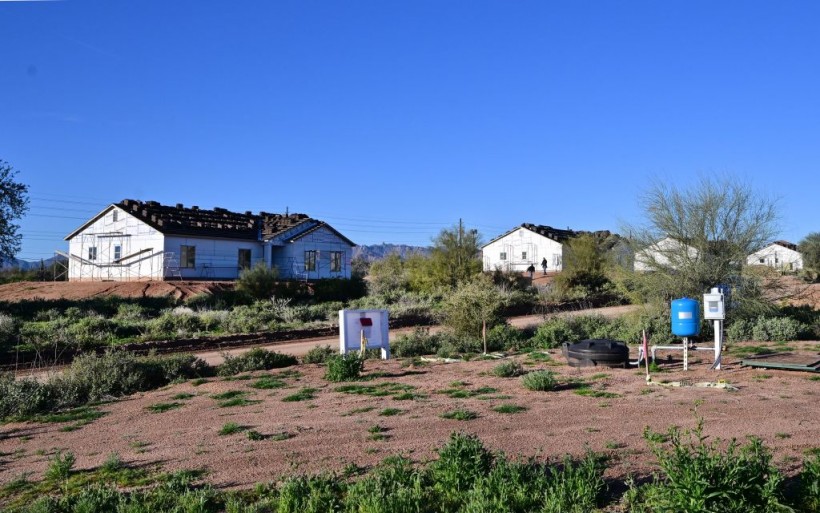Chile is facing a severe water crisis as a result of a prolonged and unprecedented megadrought that has affected most of the country since 2010.
The megadrought has been exacerbated by climate change, land use changes, and population growth, and has had negative impacts on agriculture, energy, health, and ecosystems.
Among the most vulnerable ecosystems are the sclerophyllous forests, which are dominated by tall and ancient trees that provide important ecological services and biodiversity.
In this article, we will examine how some of these trees have adapted to the megadrought and what are the challenges and risks they face in the future.
How Have Sclerophyllous Trees Responded to the Megadrought?
 (Photo : FREDERIC J. BROWN/AFP via Getty Images)
(Photo : FREDERIC J. BROWN/AFP via Getty Images)

Sclerophyllous trees are evergreen trees with hard and leathery leaves that are adapted to dry and fire-prone environments. They are characteristic of Mediterranean-type climates, such as those found in central Chile, as per Phys.org.
Some of the most common sclerophyllous trees in Chile are Cryptocarya alba and Beilschmiedia miersii, both belonging to the Lauraceae family.
A recent study by Venegas-González et al. (2022) analyzed the growth patterns of more than 400 C. alba and B. miersii trees across a latitudinal gradient in central Chile, using tree rings and isotopic data.
The study aimed to understand how these trees have coped with the megadrought and how they have been influenced by local and large-scale climatic variability.
The results showed that the megadrought has caused a significant decline in tree growth since 2002, especially in the southernmost sites where precipitation is more abundant.
However, some trees have maintained steady growth rates by using two main strategies: accessing deeper water sources and closing their stomata more frequently.
Accessing deeper water sources allows trees to avoid water stress when the surface soil is dry. This can be inferred from the oxygen isotopes in the tree rings, which reflect the source of water used by the trees.
The study found that some trees have increased their use of groundwater during the megadrought, especially in the northernmost sites where precipitation is scarce.
Closing stomata more frequently reduces water loss through transpiration but also limits carbon dioxide uptake for photosynthesis.
This can be inferred from the carbon isotopes in the tree rings, which reflect the balance between carbon gain and water loss.
The study found that some trees have improved their water use efficiency during the megadrought, especially in the central sites where precipitation is intermediate.
What are the Implications and Limitations of These Strategies?
The study by Venegas-González et al. (2022) suggests that sclerophyllous trees have shown remarkable resilience to the megadrought by adjusting their physiological responses to water availability.
However, these strategies may have trade-offs and limitations that could compromise their long-term survival
Accessing deeper water sources may deplete groundwater reserves that are already stressed by human consumption and climate change.
Moreover, groundwater may have lower quality and nutrient content than surface water, which could affect tree health and growth.
Closing stomata more frequently may reduce carbon assimilation and biomass production, which could affect tree reproduction and regeneration.
Moreover, stomatal closure may increase leaf temperature and oxidative stress, which could damage leaf tissues and photosynthetic machinery.
Therefore, although sclerophyllous trees have successfully adapted to the megadrought in the short term, it is unclear how long they will be able to sustain these strategies without compromising their future health and functioning.
Related article: Megadrought Ravages the American West, Climate Change Worsens the Situation
© 2024 NatureWorldNews.com All rights reserved. Do not reproduce without permission.


![Climate Change is Reducing Dust Levels Worldwide as Arctic Temperature Warms [Study]](https://1471793142.rsc.cdn77.org/data/thumbs/full/70320/280/157/50/40/climate-change-is-reducing-dust-levels-worldwide-as-arctic-temperature-warms-study.jpg)

![Tsunami Hazard Zones: New US Map Shows Places at Risk of Flooding and Tsunamis Amid Rising Sea Levels [NOAA]](https://1471793142.rsc.cdn77.org/data/thumbs/full/70325/280/157/50/40/tsunami-hazard-zones-new-us-map-shows-places-at-risk-of-flooding-and-tsunamis-amid-rising-sea-levels-noaa.jpg)
